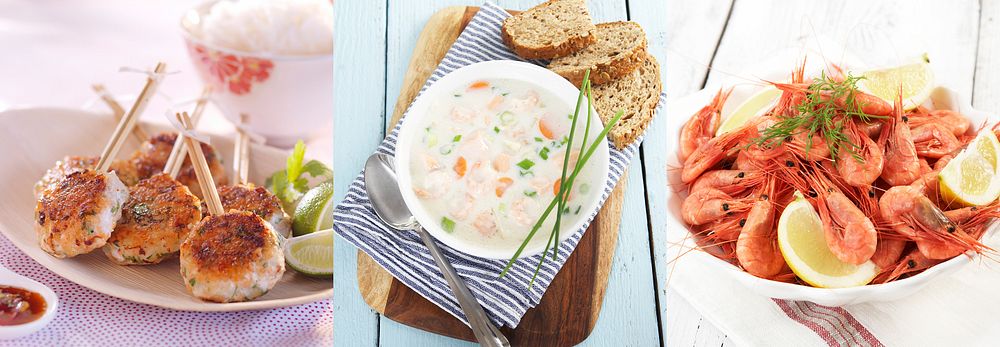The COVID-19 pandemic has affected the world in many ways. We are well-versed in the negatives, but it’s important to note that it’s also presented huge growth and innovation opportunities in markets across the world. The seafood industry is one of them.
The Norwegian Seafood Council’s (NSC) annual trend report, just launched, unveils the seafood trends that are emerging at speed thanks to the pandemic. Due to the increased need to change shopping habits, driven by store closures and restricted access, we’ve seen a marked growth in grocery e-commerce, taking the concept far beyond the weekly online shop.
Across the industry, businesses from wholesale suppliers to local independent restaurants have also been challenged to come up with innovative revenue streams that deliver a convenient, versatile solution, while also meeting the demand of a more sustainability-minded consumer.
Many trends are being pushed by younger consumers, notes the NSC report. Although younger consumers buy less fish and seafood, they’re also largely driving new types of commerce. They are often inspired by what they see online and are willing to try easy, convenient, new products. They are often the consumers pushing for clarity around sustainability.

A hunger for convenience
Dr Lars Moksness, consumer behaviour analyst at the NSC, says that e-commerce has accelerated so rapidly, with millions of consumers choosing to buy online through the pandemic, that “thinking of online versus offline is already old. The question is not are you shopping online? Now, it’s what kind of online? Which platform are you shopping from?”
•Some markets are notably more advanced: Asia-Pacific had the biggest e-commerce proportion of edible grocery sales in 2020, at 9%. A McKinsey survey from 2021 showed that 74% of Chinese respondents had used a grocery delivery service in the previous three months
•Others have seen especially rapid growth throughout the pandemic: despite e-commerce accounting for just 2.7% of edible grocery sales in Latin America in 2020, eMarketer found that it was the fastest growing region for e-commerce overall that year, with a 36.7% growth rate
•When it comes to seafood, the top three markets for buying salmon online are all in Asia: China leads, with 29% of consumers telling the NSC they very often or quite often buy salmon online, followed by South Korea and Thailand.
But the pandemic did more than drive people to e-commerce. It also spurred innovation and cemented the appetite for convenience. From 10-minute grocery delivery from ‘darkstore’ supermarkets that serve only third-party firms, to meal kits that allow you to recreate your favourite restaurant dishes at home, these trends quickly became consumer habits over a short timescale.
The report points to numerous emerging types of new commerce. However, for Moksness, the ‘new economy’ Last Mile Delivery (LMD) providers or third-party delivery services are perhaps most interesting. “I believe these can be a real boost for local businesses,” he says. “Through a third party, there is real potential to revitalise small-scale businesses in small places, such as the butcher’s shop or the fresh fish market that doesn’t have the capacity to run its own online service.”
Trust can be a key issue for many consumers buying what they see as ‘riskier’ grocery items like meat and fish online, where you can’t see or smell the produce, but this can be alleviated with LMD.
“When you can order fresh fish from the local fishmonger, you eradicate any trust issues with the product because you know the store and you shop there already,” explains Moksness. “The only difference is that you get it straight to your home via electric vehicle.”
This highlights a key opportunity for the seafood industry to leverage over the coming year or so.

Shopping with a conscience
The NSC report also focuses heavily on sustainability – a major focus for the industry, with everyone from governments to consumers demanding more transparency around sustainability.
It looks at and balances the question; will the drive for convenience curtail advances in sustainability? Moksness thinks not, and says that as technology advances, the two will increasingly complement one another. For example, electric vehicle delivery is just one element, but the growth of online also allows for more sustainable packaging, which presents the opportunity to ship differently and decrease plastic consumption.
The seafood industry is already offering up examples of where technology and sustainability converge – often in far-from-obvious ways.
The report highlights Norwegian firm Vesterålen Havbruk and its innovative use of blockchain technology to improve transparency and meet the demands of a growing, younger generation of health, climate, and animal welfare conscious consumers. The company’s ‘CodSwap’ app allows users to trace their cod from catch or harvest, through processing and transport before arriving at the destination of a fish handler.
This is also where campaigns from Godfisk (the NSC consumer brand in Norway) showing how simple and easy it is to cook with sustainably caught seafood, and new products such as minced salmon, come into their own. An easy, convenient product that tastes good, is simple to cook, and helps the consumer cut down on meat and increase seafood consumption in a sustainable, planet-friendly way. An all-round win-win.
Healthy consumers and a healthy planet
The NSC’s second annual report clearly shows the opportunities that the seafood industry – and others – can leverage in the coming years. Appetite for convenience is continuing to grow worldwide, but the need for sustainable solutions is increasingly high priority. There are distinct easy wins, but there is also a growing need for companies around the globe to invest in sustainable change to ensure we can not only provide healthy options for consumers, but also deliver in a planet healthy way too.



